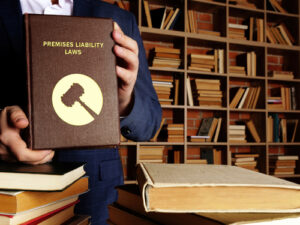What Role Does Maintenance Play in Premises Liability Cases?
What Role Does Maintenance Play in Premises Liability Cases?
When someone gets hurt on someone else’s property, poor upkeep often plays a major part. Property owners have a legal duty to keep their property safe. That includes fixing problems, cleaning surfaces, replacing broken items, and warning people about risks. If they fail to do so, they may be held responsible for resulting injuries. A premises liability lawyer can help evaluate whether a property owner’s negligence led to your accident and determine the best course of action.
What role does maintenance play in premises liability cases? A big one. Many of these cases come down to whether the owner took care of hazards before someone got hurt.
Property owners who ignore maintenance put visitors in danger. Uneven sidewalks, leaky pipes, broken lights, or faulty steps can easily cause injuries. A slip at Fashion Island Mall or a fall at a beachside rental in Corona del Mar could lead to serious harm.
Holding owners accountable often depends on whether they met legal standards for care. If you’ve been injured because a property wasn’t taken care of properly, an expert attorney near you can review your case during a free consultation and help you take the next steps.
Legal Foundation of Premises Liability Claims
Premises liability law in California holds property owners and those in control of property accountable when unsafe conditions cause injuries. This area of law focuses on whether the property owner took reasonable steps to keep their premises safe. Not every injury leads to liability, but when a person gets hurt because of a preventable hazard, the law may allow for financial recovery.
California Civil Code Section 1714 states that everyone is responsible for the results of their actions, or lack of action, when those actions cause harm to others. That includes property owners who don’t fix dangerous conditions or fail to warn people about them. The law expects owners to take ordinary care in managing their property.
Property Owner Responsibilities and Duties
Owners must keep their property in a reasonably safe condition. This includes:
- Inspecting the property regularly
- Repairing hazards once discovered
- Posting warning signs for dangers that can’t be fixed right away
Landlords, business owners, government agencies, and even private homeowners can be responsible for accidents if they fail in these duties. In California, you cansue if you get hurt on someone else’s property due to unsafe conditions that the owner failed to address.
For example, if a loose handrail in a stairwell at a shopping center goes unrepaired, and someone falls, the owner might be held accountable. Regular inspections and prompt repairs are part of their legal obligations.
Visitor Classifications
California law separates visitors into three groups. The duty owed by a property owner depends on how the injured person is classified.
- Invitees: These are people invited onto the property for business reasons, like customers at a grocery store. Owners owe invitees the highest duty of care. That means inspecting for dangers and fixing them or warning people about them.
- Licensees: These visitors come for social reasons, like friends or neighbors. Property owners must warn licensees about known dangers that aren’t obvious.
- Trespassers: These people enter without permission. Owners don’t have to inspect or fix dangers for trespassers but can’t purposely harm them or ignore clear risks that might injure someone who frequently trespasses.
The classification helps determine whether the owner acted reasonably. If a hazard injures someone the owner knew would be there, like a delivery driver, the duty of care is greater than it would be for someone who entered without permission.
Understanding these legal concepts sets the stage for evaluating whether a property owner is liable for a maintenance-related injury.
What Is Considered Inadequate Maintenance in Premises Liability?
Property owners can’t prevent every accident. But ignoring maintenance tasks or cutting corners can make accidents far more likely. Here’s where maintenance problems often show up.
Structural Maintenance Issues
Buildings in California must meet safety codes. When owners cut corners on repairs, they may break these rules.

- Building Code Violations: Ignoring codes can lead to steep staircases, low railings, or faulty wiring.
- Deteriorating Stairs, Railings, and Walkways: Cracked steps and wobbly handrails are serious hazards.
- Faulty Elevators and Escalators: Malfunctions at places like Newport Center Drive offices can cause serious injuries.
Surface and Flooring Problems
Walkways should be safe and stable. Failing to check and repair them can create hazards.
- Cracked or Uneven Pavement: Common in parking lots or on sidewalks outside businesses.
- Wet Floors Without Warning Signs: Slippery tile floors in a Balboa Peninsula café could lead to a bad fall.
- Worn Carpeting and Loose Tiles: Trips often happen when carpeting buckles or tiles become loose.
Lighting and Security Maintenance
People rely on proper lighting and safety features, especially in large or dark areas.
- Inadequate Lighting in Parking Lots and Stairwells: Low visibility creates fall risks and makes crime more likely.
- Broken Security Systems: Failing to repair cameras or alarms puts visitors at risk.
- Malfunctioning Emergency Exits: Every building must have exits that work during emergencies.
How Do You Prove Negligent Maintenance in Court?
To hold a property owner responsible, you must prove they didn’t take care of something they should’ve. That’s where notice, evidence, and maintenance standards come in.
Establishing Notice Requirements
A property owner isn’t responsible for every hazard—but they are if they knew or should’ve known about it.
- Actual Notice vs. Constructive Notice: Owners with actual notice knew of the danger. Constructive notice means they should’ve known through regular inspections.
- Documentation of Maintenance Requests: Requests made by tenants or employees can show the owner was warned.
- Time Frames for Reasonable Repairs: Failing to fix something within a reasonable period shows neglect.
Evidence Collection Methods
The stronger the evidence, the clearer the case.
- Maintenance Records and Inspection Logs: These show how often a property was checked and what repairs were made.
- Photographs and Video Documentation: Photos from the scene can show what conditions were like when the injury happened.
- Witness Testimony and Expert Opinions: Bystanders or workers can confirm dangerous conditions.
Building Code Violations as Evidence
Failing to meet legal standards makes it easier to prove negligence.
- Municipal Inspection Reports: Cities inspect buildings and leave written notices when rules are broken.
- Safety Code Compliance Records: These documents prove whether the property followed safety laws.
- Professional Maintenance Standards: Maintenance workers often follow industry rules. Failing to do so may indicate negligence.
Common Types of Maintenance-Related Premises Liability Cases
Property owners must keep different spaces in working order. Many types of premises liability accidents occur when maintenance is neglected. Here are some common problems that lead to injuries:
- Slip and Fall Accidents from Poor Housekeeping: Spills not cleaned up in time cause many store injuries.
- Trip and Fall Incidents Due to Structural Defects: Uneven concrete or broken steps lead to serious falls.
- Injuries from Falling Objects and Inadequate Storage: Boxes stacked too high in a supply room can fall onto visitors.
- Swimming Pool Accidents and Water Feature Maintenance: Loose tiles or faulty drains in pools near Newport Bay can be dangerous.
- Parking Lot and Sidewalk Injuries: Potholes or broken curbs create risks in public and private lots.
What Defenses Do Property Owners Use in Maintenance Cases?
When property owners get sued, they often try to avoid responsibility by using a few common defenses.
Lack of Knowledge Defense
Owners may claim they didn’t know about the problem.
- No Actual or Constructive Notice of Hazard: They argue they didn’t see or hear about the issue and had no reason to know.
- Regular Inspection Schedules as Protective Measure: Owners often show inspection records to prove they checked regularly.
Comparative Negligence Claims
Blaming the injured person is a common defense tactic.
- Victim’s Failure to Exercise Reasonable Care: If someone was looking at their phone or ignored warning signs, the owner may argue they caused their own injury.
- Open and Obvious Danger Doctrine: Owners claim the hazard was so clear that a reasonable person would’ve avoided it.
Third-Party Responsibility
Sometimes, someone else dropped the ball— and the question becomes, is your landlord responsible if you get hurt, or does the blame fall on someone else?
- Contractor Negligence in Maintenance Work: A contractor may have failed to fix or warn about a hazard after being hired.
- Tenant Responsibility in Commercial Leases: In some leases, the tenant, not the landlord, is responsible for upkeep.
How Long Do Property Owners Have to Fix Maintenance Issues?
The law doesn’t set a hard deadline, but property owners are expected to act within a reasonable amount of time.
Reasonable Time Standards
What counts as “reasonable” depends on many factors.
- Factors Determining Reasonable Repair Timeframes: These include the type of hazard, how dangerous it is, and how long it’s been known.
- Emergency vs. Non-Emergency Maintenance Priorities: Serious issues like exposed wires should be handled right away. Less urgent problems still require timely attention.
Temporary Safety Measures
If repairs take time, owners should take steps to protect visitors in the meantime.
- Warning Signs and Barriers: Wet floor signs or cones around holes show owners tried to prevent injury.
- Alternative Access Routes: Redirecting foot traffic keeps people away from unsafe areas.
- Interim Protective Measures: Even placing mats or covering cords can reduce risks.
Repeat Violations and Pattern Evidence
History can show neglect.
- History of Similar Maintenance Failures: If someone else got hurt in the same way, it strengthens a claim.
- Systemic Negligence in Property Upkeep: Repeated issues at a property on MacArthur Boulevard could show long-term disregard for safety.
Damages Available in Maintenance-Related Premises Liability Cases
If an injury happened due to poor upkeep, the law allows victims to seek financial recovery for several kinds of losses.
- Medical Expenses and Ongoing Treatment Costs: These include ER visits, surgery, physical therapy, and medication.
- Lost Wages and Diminished Earning Capacity: Missing work or being unable to return to the same job creates financial strain.
- Pain and Suffering Compensation: Physical pain, stress, and loss of enjoyment can be part of a claim.
- Property Damage Reimbursement: Broken phones, glasses, or other items damaged in the fall can be included.
- Punitive Damages in Cases of Gross Negligence: If the owner ignored serious risks on purpose, a jury might award extra damages.
How Our Attorneys Can Help

Greg Bentley & Keith More, Premises Liability Lawyers
Premises liability claims take time and effort. Our attorneys at Bentley & More LLP support injury victims at every step, helping you understand how to prove premises liability and build a strong case.
- Comprehensive Case Evaluation and Merit Assessment: We’ll listen to your story, review the facts, and give honest feedback about your case.
- Investigation and Evidence Gathering Services: We dig deep to find maintenance records, witness statements, and photo evidence.
- Expert Witness Coordination and Testimony: We bring in professionals who can explain safety rules and property standards.
- Negotiation with Insurance Companies and Defense Counsel: We push back when insurers try to downplay injuries or deny responsibility.
- Trial Representation and Courtroom Advocacy: When property owners refuse to accept blame, we’re ready to present your case to a jury.
- Contingency Fee Arrangements for Financial Accessibility: We only get paid when we recover money for you.
Frequently Asked Questions About Premises Liability Accidents
Can I sue if I was injured on someone else’s property but the hazard seemed obvious?
Yes, but the owner may argue the danger was clear enough to avoid. Your actions will be part of the case, but so will the owner’s duties.
What if the property owner claims they didn’t know about the maintenance problem?
If the issue existed long enough, or if others complained before you got hurt, they may still be responsible under constructive notice.
How long do I have to file a premises liability lawsuit?
In California, you generally have two years from the injury date. Missing this deadline usually means losing your right to sue.
What if I was partially at fault for my accident?
You may still recover damages, but the amount might be reduced based on your share of the blame.
Can I recover damages if the maintenance issue was caused by weather?
It depends. Property owners still need to take reasonable steps to reduce weather-related risks, like salting icy paths or fixing drainage issues.
Take Action After Your Premises Liability Injury
Getting hurt on someone else’s property creates problems no one asks for. Bentley & More LLP helps people who suffer because property owners didn’t take care of their spaces. The sooner we get involved, the better chance we have of finding solid evidence and building a strong case.
Waiting too long can mean lost records or witnesses who forget what happened. Early legal help means your rights stay protected, and your case stays on track.
We offer free consultations to walk through your options. If we take your case, you don’t pay us upfront. Contact our team today to get started. Let us help you move forward.


